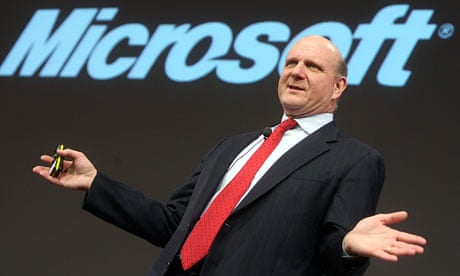For more than a decade, a team of physicians has been ministering to a patient who was once vital and robust, but now no longer thrives. Recurring diagnostic errors, stubborn inattention to symptoms, improper prescriptions haven't yet killed the object of their care but, lately, the patient's declining health has become so obvious that the doctors, now embarrassed and desperate, have scheduled a heart transplant.
Now comes the test: Would you entrust the patient's future to such a confederacy of dunces?
With this metaphor in mind, let's contemplate the record of Microsoft directors since Steve Ballmer assumed the mantle 13 years ago, and ask if they're qualified to appoint a successor.
Consider the directors' obdurate passivity while they watched the company miss opportunities, take one wrong turn after another, and fail to execute crucial transitions. Search was conceded to Google; digital music (players and distribution) is dominated by Apple; social networking belongs to Facebook, Twitter, and LinkedIn; the smartphone market is handed over to Google's Android and Apple's iPhone; tablets from the same duo are now bleeding the Windows + Office Golden Goose; Windows Vista and now Windows 8; Surface tablets … Even the once mighty Internet Explorer browser has been displaced by Google's Chrome running on all desktop and mobile platforms.
Blaming (and forgiving) the CEO for one or two mistakes is reasonable. But if these missteps were entirely Ballmer's fault, why did the directors keep him at the helm? This raises the question: How much of the company's value did the directors themselves let Google, Apple, and others run away with? Is Microsoft's board a danger to the company?
The latter question comes in sharper relief when looking at the timing and manner of Ballmer's exit.
On 11 July, Ballmer announces a major company reorganisation. More than just the usual medley of beheadings and redistribution of spoils, Microsoft was to restructure itself away from its old divisional arrangement and move towards the type of functional organisation used by companies such as Apple.
In addition, the new company motto became Devices and Services, evoking a virtuous circle: Best-of-class branded devices would sell more great Microsoft services, while the latter would give a boost to Microsoft devices.
A week later, on 18 July, Microsoft releases pedestrian quarterly numbers, the lowlight of which is a $900m (£557m) write-off attributed to very poor sales of Surface PC/tablets
On 23 August, Ballmer announces his sooner-than-planned retirement – sometime in the following 12 months. No word of a successor.
And, to top everything off, on 3 September, with Ballmer on his way out, the board approves the emergency acquisition of Nokia's handset business, complete with 32,000 angry Finns. (We'll discuss their misdirected anger in a future Monday Note.)
A drastic company reorganization makes sense. Instead of one more turn of the optimising crank, Microsoft acknowledges that it needs to think differently.
Writing off unsold inventory is the sensible recognition of a problem; it removes an impediment by facilitating a fire sale.
There was a clear and present danger for Nokia's handset business to fail, or to become the walking dead. Microsoft bought it to avoid the possible collapse of the Windows Phone platform. In theory (i.e., ignoring cultural realities), the acquisition gives Microsoft more control over its smartphone future.
All rational moves.
But letting Ballmer go right in the middle of two huge and complicated transitions – and without immediately appointing a successor? On the face of it, the timing and manner of Ballmer's exit defies common business sense. It also raises questions about the board's failure to adequately plan for Ballmer's succession. Supposedly, succession planning is a key component of good corporate governance. In plain language, a board of directors is obligated to identify and groom successors for key positions, starting with the CEO.
Which raises a few more questions.
Microsoft undertakes two risky, company-redefining moves: a profound structural and strategic reorganisation, followed by its most foreign, most people-intensive acquisition ever. What was the overwhelming need to announce Ballmer's departure – without naming a successor – right in the middle of such instability?
Considering its résumé, what makes Microsoft's board qualified to pick a new CEO?
And what are the parameters of the search for Mr. Right? Assuming Microsoft hires an industry heavyweight, will this individual be given the space and power to be his own woman or man, that is to reshuffle the board? And what about the freedom from deferring to the company's founder?
And what must the mood be like at Microsoft? "When you receive an order, do absolutely nothing and wait for the countermanding directive." This ancient army saying must now be popular in Redmond. It's not that people working there don't care, but they just don't know what the next CEO will want, and they certainly don't know when. How can one not expect damaging paralysis and politicking when the CEO is let go without a successor?
All interesting questions.
